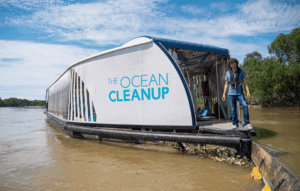Raw milk, unpasteurized and straight from the cow, has been cherished by many for centuries, long before pasteurization became the norm. Advocates argue that raw milk is rich in nutrients that are destroyed during pasteurization. Yet, the debate over raw milk isn’t just about health – it’s also about freedom, choice, and the small farmers who are fighting to survive in a world dominated by big dairy. On the other side of the conflict, public health officials warn of the dangers posed by raw milk, pointing to its potential to harbor harmful bacteria.
The recent raid on Amos Miller’s farm has brought this battle to the forefront. Miller, a Pennsylvania farmer dedicated to providing his community with raw milk and other unprocessed foods, faced an aggressive crackdown by federal authorities who seized his products and fined him heavily. This shocking incident has sparked outrage among raw milk supporters and reignited the debate over who gets to decide what we consume. As the war on raw milk intensifies, it’s crucial to understand what’s really at stake: is it a matter of protecting public health, or an infringement on personal choice and traditional farming practices?
The Basics of The Nutritional Debate
At the heart of the raw milk controversy is a heated debate over nutrition. Proponents of raw milk argue that it is a complete, living food, filled with enzymes, beneficial bacteria, and vitamins that are significantly reduced or destroyed during pasteurization. They claim that these natural components can help boost the immune system, improve digestion, and even reduce allergies, making raw milk a more wholesome choice compared to its pasteurized counterpart. For these advocates, pasteurization – a process that heats milk to eliminate pathogens – also strips away many of the elements that make milk a healthy beverage in the first place.
However, the other side insists that pasteurization is a crucial safety measure that outweighs any potential loss of nutrients. Public health officials point to studies showing that while some enzymes and bacteria are indeed destroyed by pasteurization, the nutritional differences between raw and pasteurized milk are minimal. They argue that pasteurization eliminates dangerous pathogens that can cause severe illness, particularly in vulnerable populations like young children, the elderly, and those with compromised immune systems. According to them, any perceived health benefits of raw milk are far outweighed by its risks.
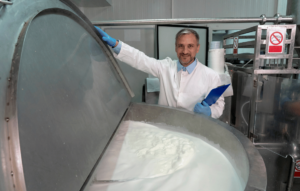
While both sides present compelling arguments, the question remains: are the supposed benefits of raw milk enough to justify the potential health risks? As the debate continues, more people are starting to ask why they should have to choose between nutrition and safety, and whether there might be a better way to regulate raw milk without limiting access to those who want it.
Health Risks Associated with Raw Milk
When it comes to raw milk, safety is the primary concern cited by regulators and public health officials. Unlike pasteurized milk, raw milk is not heated to eliminate bacteria, leaving it potentially contaminated with harmful pathogens such as E. coli, Salmonella, and Listeria. These bacteria can definitely cause serious foodborne illnesses, with symptoms ranging from stomach cramps and diarrhea to more severe complications like kidney failure, neurological damage, or even death. Public health agencies, such as the Centers for Disease Control and Prevention (CDC) and the Food and Drug Administration (FDA), frequently highlight these risks, citing numerous outbreaks and illnesses linked to raw milk consumption in recent years.
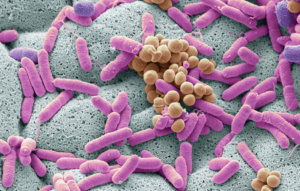
In their view, the data is clear: raw milk poses an unnecessary health risk, especially to children, pregnant women, the elderly, and those with weakened immune systems. They argue that pasteurization is a simple, effective way to make milk safe for everyone without compromising its essential nutrients. Statistics show that the rate of outbreaks associated with raw milk is significantly higher than that of pasteurized milk, reinforcing their stance that raw milk should remain heavily regulated if not outright banned.
However, raw milk supporters argue that these risks are exaggerated and that, with proper handling and sourcing from healthy, well-maintained farms, raw milk can be safe to drink. They contend that many of the reported illnesses are due to poor sanitation or mishandling, rather than raw milk itself. Furthermore, they believe that informed consumers should have the freedom to choose whether or not they want to take that risk, just as they do with other potentially hazardous foods like raw oysters or undercooked meat.
This conflict between perceived risk and personal choice forms a core aspect of the raw milk debate. While public health authorities call for caution and regulation, raw milk advocates push back, demanding transparency, education, and the right to make their own informed decisions about what they consume.
Advocates and Arguments for Raw Milk
Despite the warnings from public health authorities, a growing number of people are passionately advocating for the consumption of raw milk. These supporters include small-scale farmers, health-conscious consumers, and advocates of food freedom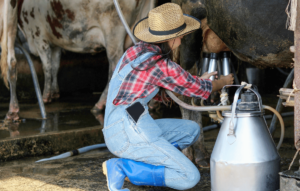 who believe raw milk offers unique benefits that can’t be replicated by pasteurized versions. For them, raw milk represents a natural, unprocessed lifestyle and a stand against industrialized food production.
who believe raw milk offers unique benefits that can’t be replicated by pasteurized versions. For them, raw milk represents a natural, unprocessed lifestyle and a stand against industrialized food production.
Advocates argue that raw milk is rich in probiotics, enzymes, and bioavailable nutrients that support immune function, improve digestion, and may help alleviate allergies and asthma. They claim that pasteurization destroys these beneficial components, reducing milk’s overall nutritional value. From their perspective, pasteurized milk is “dead,” lacking the elements that make it valuable to health.
Beyond health, the raw milk movement centers on consumer choice and resisting government overreach. Many supporters believe individuals should have the freedom to decide what they consume without heavy-handed regulation. They view the restrictions on raw milk as an example of broader attempts to limit food freedoms, often driven by powerful industry lobbies.
An important player in this movement is the Raw Milk Institute (RAWMI), a non-profit organization dedicated to improving the safety and accessibility of raw milk. RAWMI works with farmers to develop rigorous standards and testing protocols to ensure raw milk is produced safely, aiming to reduce the risk of contamination while maintaining its natural benefits. By providing training, support, and resources to small-scale farmers, RAWMI promotes transparency and accountability within the raw milk community, demonstrating that raw milk can be both safe and nutritious when produced under carefully managed conditions.
The recent raid on Amos Miller’s farm, where raw milk and other unprocessed foods were seized, has become a rallying point for these advocates in the United States. They argue that such actions unfairly target small farmers while favoring large dairy corporations that dominate the market. For them, raw milk symbolizes resistance against industrial agriculture and a commitment to sustainable, small-scale farming that prioritizes animal welfare and environmental health.
As the raw milk community continues to grow, organizations like RAWMI call for more food sovereignty, transparency, and a return to traditional methods of farming and eating. Their stance challenges the idea that raw milk is inherently dangerous, encouraging a broader and more nuanced conversation about health, freedom, and the choices we make regarding the food we consume.
Bans, Restrictions, and Legal Battles
The legal status of raw milk varies dramatically depending on where you are, reflecting a complex regulatory landscape shaped by both health concerns and political pressures. In the United States, for example, the sale of raw milk is legal in some states, illegal in others, and heavily restricted in most. Federal law prohibits the interstate sale or distribution of raw milk, limiting access primarily to local or state markets. In Europe, the regulations are more varied, with some countries allowing raw milk sales while others impose strict bans or controls.
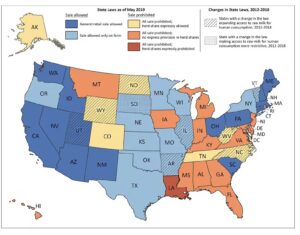
This patchwork of regulations has led to a series of high-profile legal battles and government crackdowns on raw milk producers. Small farmers, like Amos Miller, find themselves caught in the crosshairs of these conflicts. Miller’s farm raid, where federal authorities seized his products and imposed heavy fines, is just one example of how raw milk producers face significant obstacles. Many argue that these crackdowns are not just about public safety but also about protecting large dairy interests that benefit from keeping raw milk out of the mainstream market.
Supporters of raw milk see these legal battles as an attack on small-scale farmers and a restriction of consumer rights. They argue that the existing regulations infringe on natural rights and unfairly penalize those who wish to buy or sell raw milk, effectively denying people the freedom to live their lives as they see fit.
Conversely, public health officials defend these regulations as essential measures to prevent outbreaks of foodborne illnesses. They argue that without such rules, the risks associated with raw milk would increase, particularly in areas where proper testing and safety protocols are not strictly enforced.
The ongoing regulatory tug-of-war reflects deeper questions about who gets to control food production and distribution, and to what extent consumers can make informed choices about their health. As raw milk advocates continue to challenge these laws, they call for reforms that balance safety with the freedom to choose, believing that educated consumers should have the right to decide for themselves.
Environmental and Ethical Considerations
Beyond the debate over health and safety, the raw milk conflict also raises significant environmental and ethical questions, particularly when it comes to the impact on small farms and local food systems. Many raw milk producers are small, family-run farms that emphasize sustainable and ethical farming practices, such as grass-fed diets, humane animal treatment, and minimal environmental impact. For these farmers, producing raw milk is not just a business – it’s a commitment to a way of life that prioritizes quality over quantity, transparency over secrecy, and local over industrial.
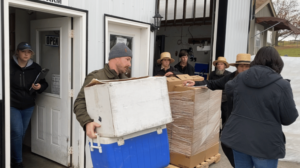
However, the heavy regulation and frequent crackdowns on raw milk producers threaten the survival of these small farms. Farmers like Amos Miller, often find themselves at odds with a regulatory framework that favors large-scale dairy corporations. These bigger players in the dairy industry, with their extensive resources and lobbying power, often push for stricter regulations on raw milk, arguing that it protects public health. However, critics claim that these regulations disproportionately impact small farms, making it nearly impossible for them to compete in the market.
From an environmental standpoint, raw milk supporters argue that small-scale raw milk production is more sustainable than industrial dairy farming. They claim that raw milk farms typically use fewer resources, produce less waste, and have a lower carbon footprint than large dairy operations. Additionally, because raw milk is often sold locally, it travels fewer “food miles,” reducing its environmental impact and supporting local economies.
Ethically, as we’ve mentioned, the raw milk debate heavily touches on issues of food sovereignty and the right of communities to make decisions about their food systems. For many advocates, being able to choose raw milk represents a broader fight for the right to access fresh, natural foods and to support farming practices that align with their values without needing to rely on large industrial operations. They argue that consumers should have the freedom to make their own choices about the foods they consume and the farming systems they support, without undue interference from corporate interests or government regulations.
As the battle over raw milk continues, it is clear that this issue is not just about a single product but also about the future of food systems, the protection of small farms, and the preservation of sustainable and ethical agricultural practices. The war on raw milk thus serves as a microcosm of larger conflicts over control, transparency, and sustainability in the modern food landscape.
Conclusion: The Future of Raw Milk
The war on raw milk is far from just a debate over health and safety – it’s a complex struggle involving consumer choice, government regulation, environmental sustainability, and the survival of small farms. While public health officials and regulators argue that pasteurization is essential for preventing disease, raw milk advocates see the current regulatory framework as an offense to personal freedom and a threat to traditional farming practices.
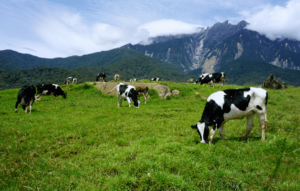
The recent raid on Amos Miller’s farm has highlighted the tension between these two sides, drawing attention to the challenges faced by small-scale farmers who prioritize natural, local, and more sustainable food production. As this battle continues, it raises critical questions about who gets to decide what is safe, what is healthy, and what our food system should look like.
Moving forward, finding a balance between safety and choice, regulation and freedom, seems more important than ever. As more consumers demand the right to make their own informed decisions about the food they consume, the future of raw milk – and the rights of those who produce and enjoy it – remains uncertain. Whether it leads to greater acceptance, better regulation, or continued conflict, the raw milk debate is sure to continue shaping conversations about health, food sovereignty, and the values we hold in our food systems.






